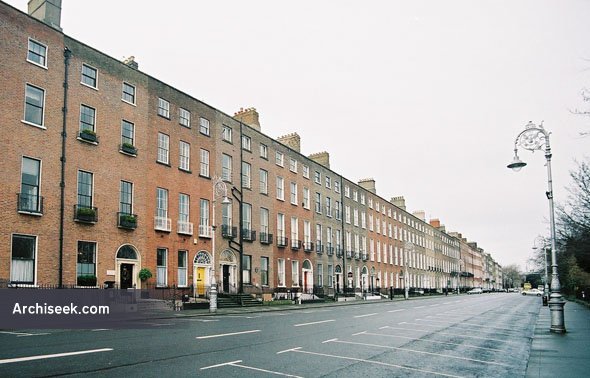Reassessing Architectural Conservation Areas Conference

Dublin Civic Trust is pleased to announce details of a one-day conference assessing the role of Architectural Conservation Areas since their introduction under the Planning & Development Act, 2000.
Placing a special emphasis on historic urban landscapes, this timely symposium will address how the ACA instrument has performed in Ireland to date, and how it may serve as a framework for best practice building and landscape conservation, urban design, property management and district enhancement. Appropriately, it will be hosted in the gracious environment of George’s Hall, Dublin Castle, at heart of Dublin’s historic centre.
Area-based built landscape conservation has been a planning tool of many European countries since the mid 20th century, recognised as a means of protecting areas of distinctive heritage value. From urban to rural, conservation areas are used to preserve the character of places as diverse as formal neoclassical streetscapes, market squares to isolated religious settlements. Designed to encompass more than individual buildings and structures, conservation areas typically aim to consolidate the character of what makes a place distinctive, by protecting elements such as public realm, planting, traditional settlement patterns and building materials, and by controlling the nature of new development.
Since their inclusion in the 2000 Act, ACAs have been adopted by most Irish planning authorities and are administered by their planning departments and conservation/heritage offices. To date, the relative success of ACAs has yet to be fully quantified, in terms of public awareness of designation, protection of heritage, tangible enhancement of places, encouragement of design excellence in new development, and related socio-economic impacts.
Their roll-out has been somewhat inconsistent across the country, with some local authority areas such as Cork featuring dozens of ACAs, but major urban areas such as Dublin city hosting only 7 ACAs within its canal ring and a further 7 beyond. The approach to ACA policy drafting also varies considerably, from in-depth character analysis in some cases, to little more than ‘red line’ boundary exercises with brief attendant descriptions in others.
Similarly, the active operation of ACAs has yet to be reviewed in the context of translating written descriptions and character appraisals into active development control, planning enforcement, enhancement initiatives and forward planning schemes. At a time of constrained public resources, the involved management of ACAs is often considered burdensome by local authorities, while in many cases their designation is perceived as overly restrictive of development and a hindrance to investment. By contrast, they are often welcomed by residents groups as a means of protecting and enhancing the character and property values of residential areas.
The aim of this event is to highlight the purpose of ACA designation as originally designed under the 2000 Act, to assess how it has performed to date, and to learn from international best practice in the implementation and management of similar area-based conservation initiatives.
Full details can be downloaded here, and registration available here
